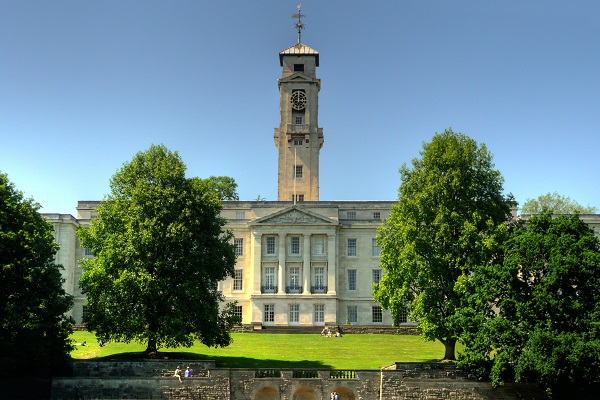University of Nottingham: £1m project to develop world’s first biodiversity credit standards
A research team at the University of Nottingham are set to work on a £1 million project to inform the development of the world’s first biodiversity credit standards, to help businesses and governments to quantify their impacts on the natural world.
Biodiversity comprises all living components in ecosystems and is a core element of the natural world.
A biodiversity credit standard is a standard for assigning value to biodiversity for market trading and investment. Biodiversity credits have similarities to carbon credits, which allow investment in projects that capture and store carbon.
Associate Professor Richard Field, in the School of Geography at the University of Nottingham, is leading the project.
Dr Richard Field resize
Recent and upcoming legislation in the UK, the EU and elsewhere is introducing greater requirements for organisations of many types to report on the effects of their activities on both carbon and nature. There is also rapidly increasing private sector interest in nature conservation as part of corporate social responsibility and positive publicity.
Dr Richard Field, Associate Professor in the School of Geography
He continued: “These trends, plus various natural capital impact assessment schemes being developed, are creating a large demand for biodiversity credits. However, there is currently no accepted way of measuring biodiversity for this purpose, which is severely hindering investment, and no biodiversity credit standard exists yet.
“Biodiversity is very different, and much more complex, than carbon. It has no equivalent of the carbon atom or carbon dioxide molecule. Instead, there are many different aspects of biodiversity that matter and can be measured, including numbers of species, characteristics and ecological roles. Species found in a coral reef are all different to those found in a field in rural Britain. It matters which species are where, and some species are facing much greater threat of extinction than others. What is happening in the wider landscape also matters.”
The academics must first answer the question, in assigning tradable value to biodiversity, how do you measure biodiversity itself, for that purpose? And how can you measure biodiversity so as to compare change in biodiversity in a coral reef with that in a British field? Both need to be expressed in the same terms: numbers of biodiversity credits, and assigned monetary value.
Working with a wide range of stakeholder organisations including The Wallacea Trust, in an initial project, Dr Field and his team put forward a potential method. One of the main aims of the new project is to test this methodology in the field, along with any other methods that meet the criteria for use in biodiversity trading.
We need to do the science to see whether the method is fit for purpose. Do you get the same answer if you apply it repeatedly in the same place at the same time? How do we account for seasonal variations? Is the method sensitive enough to measure biodiversity change at a site over a five-year period? Answers to these questions and others are essential if the market is to have confidence in the biodiversity credits.
Dr Richard Field
The research team will also study how the biodiversity credits are used and viewed by industry and other stakeholders, assessing the uptake of a new innovation from the start.
The interdisciplinary team, made up of geographers, economists, bioscientists and business experts, will work with two charities on the project: the Wallacea Trust, which concentrates on biodiversity conservation through business engagement, and Plan Vivo, an ethical certification charity. Dr Field and other project partners are also active members of biodiversity credit working groups led by the World Economic Forum and the United Nations Development Programme.
Once developed, the biodiversity credit standard and associated methodology will serve as a management tool for decision-makers, from businesses who want to offset their biodiversity impacts to landowners wanting to undertake biodiversity projects to fund nature conservation on their land. This will help integrate economics of biodiversity in decision making in the UK, in turn helping to meet wider global biodiversity targets and sustainable development goals.
The co-investigators on the project are:
Dr Bouwe Dijkstra in the School of Economics at the University of Nottingham
Dr Andrew Greenman at the Norwich Business School at the University of East Anglia
Dr Geertje van der Heijden in the School of Geography at the University of Nottingham
Dr Sarah Luke in the School of Biosciences at the University of Nottingham
Dr Franziska Schrodt in the School of Geography at the University of Nottingham
Emeritus Professor Colin Thorne in the School of Geography at the University of Nottingham
Dr Alexandra Zieritz in the School of Geography at the University of Nottingham
Dr Jake Snaddon in the School of Geography & Environmental Science at the University of Southampton
Dr Stacia Stetkiewicz in the School of Biosciences at the University of Nottingham
Professor Frances Bowen at Queen Mary University of London
The project has received £800,000 in funding from the Natural Environment Research Council (NERC) and the Economic and Social Research Council (ESRC) under the call ‘Improve understanding of the economics of biodiversity’, within the NERC-led ‘Economics of Biodiversity’ programme.
It follows a previous award for a 2022 project from the ‘Synthesising evidence in economics of biodiversity’ call, also led by Dr Field, and runs concurrently with a NERC Knowledge Exchange Fellowship for Dr Field to work on biodiversity credits.

